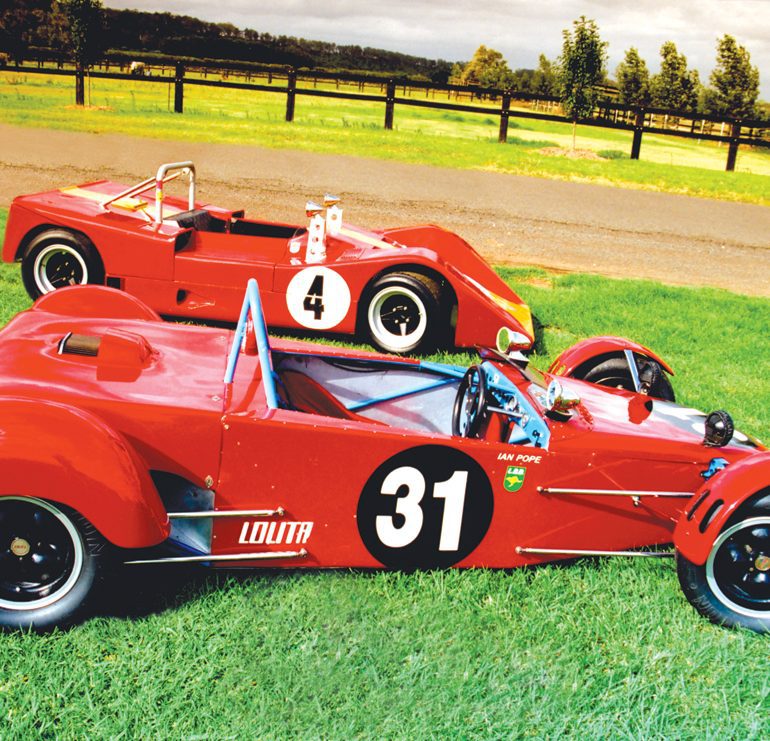1968 Lolita MkI & the 1969 Lolita MkII
My first car was a British Motor Corporation Mini. I had just turned 17 and, with $200 burning a hole in my pocket, I just had to have a car. I didn’t need one, of course, but fired with the impetuosity of youth there wasn’t a moment to lose. It was at an auction that I put my hand up at the wrong time and $160 later a 1963 Lettuce Green Morris 850 was all mine. I suspect that my mother was used to me bringing home stray and injured dogs and cats, as she didn’t bat an eyelash when I arrived with the Mini. Thinking back, I suppose that it wasn’t in too different a condition as so many of the animals.

I didn’t know the first thing about cars, didn’t have any tools, and frankly didn’t have a clue. Little did I know that I was about to embark on an automotive adventure that I am still traveling on. I soon found out that, at the slightest exertion, the Mini’s cooling system would boil away merrily, and quickly experienced that less-than-pleasing feeling when the brake pedal sank to the floor. Not long afterward I also taught myself how to change a cylinder head gasket and discovered that it’s a lot easier bleeding brakes when there is someone to help.
That car started a love-hate relationship I had with Minis that was to last for over 30 years. After the 850, came various other models such as an 1100-cc Mini Deluxe, 998-cc Mini Cooper and, last of all, a couple of 1275-cc Cooper Ss. All my mates had Minis and even a series of early girlfriends had Minis. I just loved when they performed the way I wanted them to (the cars, not the girls—well!!), but hated when they needed work, which was often. As I got older, the love-hate relationship became intense when my back decided that bending over a car as small as a Mini was not what it wanted to do. I finally cured myself when I traveled to the red-dirt outback country to pick up a newly purchased Mini van. It was literally in pieces and the body had rust in all the wrong places. After a little work, I recall thinking, “What the hell am I doing this for? Do I really want to drive this when I’m in my late 50s?” So, I sold the lot to a young bloke who wanted to turn it into a Mini utility or pickup.
Yes, it took the perils of seven Minis before I was finally cured, but that doesn’t mean that I still don’t take a keen interest in the flying bricks taking part in historic racing. Okay, I admit it still gives me a thrill when I see a Mini go right up the tail of a Mustang.
Of course, the original Issigonis-designed Mini has gone down in history as one of the most iconic of motor cars, and it is doubtful that we would have the huge number of front-wheel-drive cars we do today if not for its introduction.
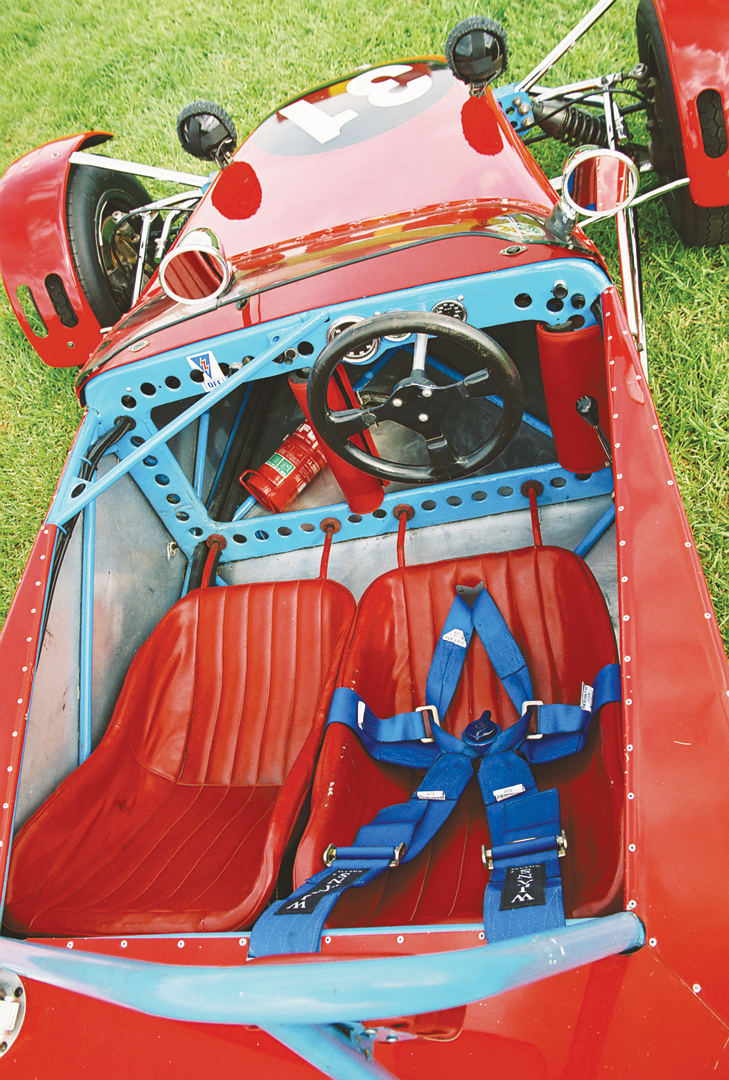
Sideways Engine
In case you didn’t know, the engine in a Mini is sideways, or what was called at the time “East-West.” Clever man Sir Alex Issigonis, as while he wasn’t the first to design a front-wheel-drive car, he was the first to join all the pieces together into one car that worked effectively. Sideways engine, gears in the sump sharing the engine oil, differential just behind with drive shafts to the front wheels via very effective constant velocity joints. Sounds daunting, but when in good condition, it all works very well indeed. Quick too, as John Cooper found out when he applied the knowledge he learned from BMC Formula Junior engines. BMC was impressed with what Cooper had come up with, and so the Mini Cooper was born.
The whole lot sits in a subframe that also holds the front suspension. Over the years, quite a number of energetic enthusiasts have come to realize that the Mini subframe, complete with the engine/gearbox unit, makes for a useful power unit that can be used to power cars of their own design. Here in Australia, for instance, Nota (back in 1968) launched their clubman-style Nota Type IV Clubman with a complete Mini engine in the rear. Dubbed the “Fang” by a local magazine, it was reasonably popular, too, with 35 being built. It’s pleasing to report that Nota is still with us and still producing cars in small quantities, but with rear-mounted, modern Toyota V-6 engines.
In England, too, the choice of the Mini engine was also popular. Examples such as the MiniJem and Mini Marcos come instantly to mind as does the Unipower GT. However, with the latter, the engine is located in the rear, with the wheels locked in the straight-ahead position, while in the other two the engine was in its traditional front location.
So, in addition to enjoying watching Minis harrying much larger vehicles, I have also taken a keen interest in the small number of BMC Mini-powered competition cars. Not that there are or have been a huge number of such vehicles in Australia; and thinking about it, the only cars that remain active from that genre are the two Lolitas built by Lolita Automotive Developments during the late 1960s and early 1970s.
Forward Too
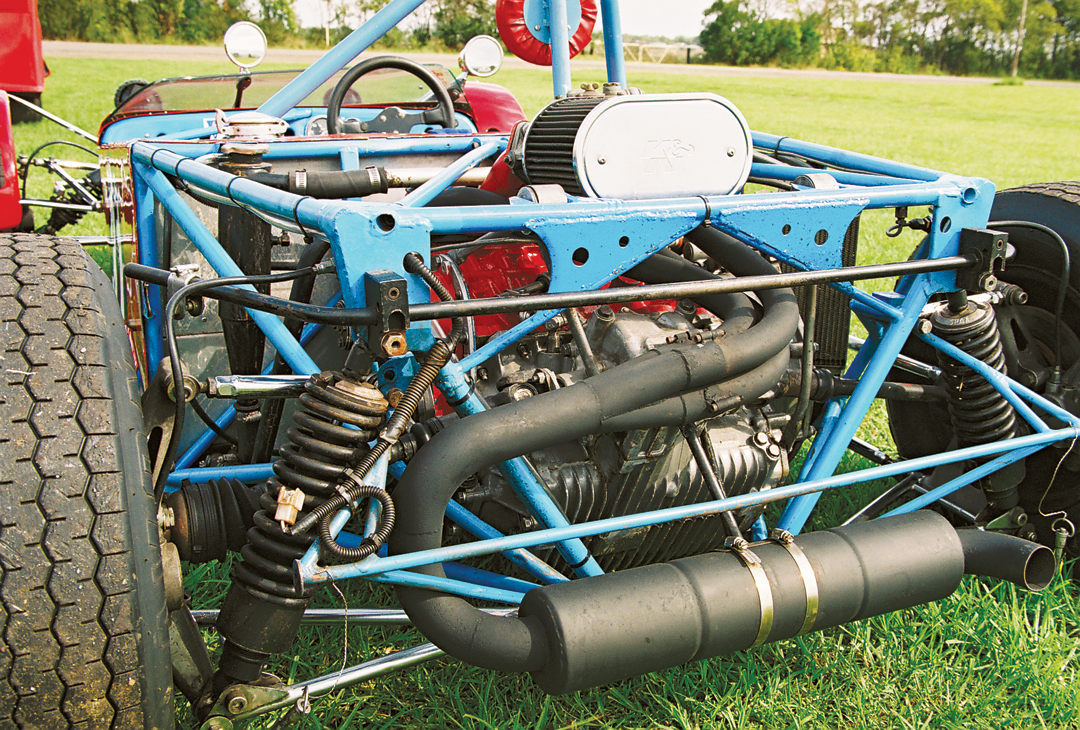
It was somewhat of an auspicious occasion, as many years had passed by since the two Lolitas had been together. I had asked the owners if they could bring their cars along so we could be up close and personal with them both. More on that later; but Ian Pope was an original co-owner of the Lolita Mk1 and, while the Mk II was owned by Ian Ross, he had recently sold the car and the occasion was the perfect opportunity to pass it on to Greg Neal, its new owner.
Being a frustrated mechanic from way back, I am always drawn to the engine and other essential pieces of machinery. Having fettled a Mini for perhaps more times than I am really keen to remember, I was used to opening the small bonnet and seeing the vertical engine with all its electrics open to view and, of course, water when it rained. Frankly, I wasn’t quite prepared for what I saw in both Lolitas. To achieve a lower body profile, the rear-mounted engines are tilted forward. In the case of the Mk I, it’s a massive 60-degrees and 45-degrees in the Mk II. It mightn’t seem like such a big thing, but to see the angle of the engine literally took my breath away. I think it was the very first thing that really took my interest and made me want to look closer.
At this point, it is perhaps an appropriate time to introduce another name to this story of two Lolitas, and that’s Henry Nehrybecki. It’s a name that probably doesn’t mean much to some Australian enthusiasts, let alone those elsewhere around the world. However, there is another name that for a time was a household name in Australia and very well known with motor sport enthusiasts right around the globe. That name is Frank Matich, most notably associated with his magical Matich SR3s and SR4 sports prototype and his later F5000 cars. Sure they wore Frank’s name and it would be nice to say that these cars were the result of Matich’s fertile mind, however, while his input was no doubt significant, it was during a time when Nehrybecki was doing work for the Australian champion.
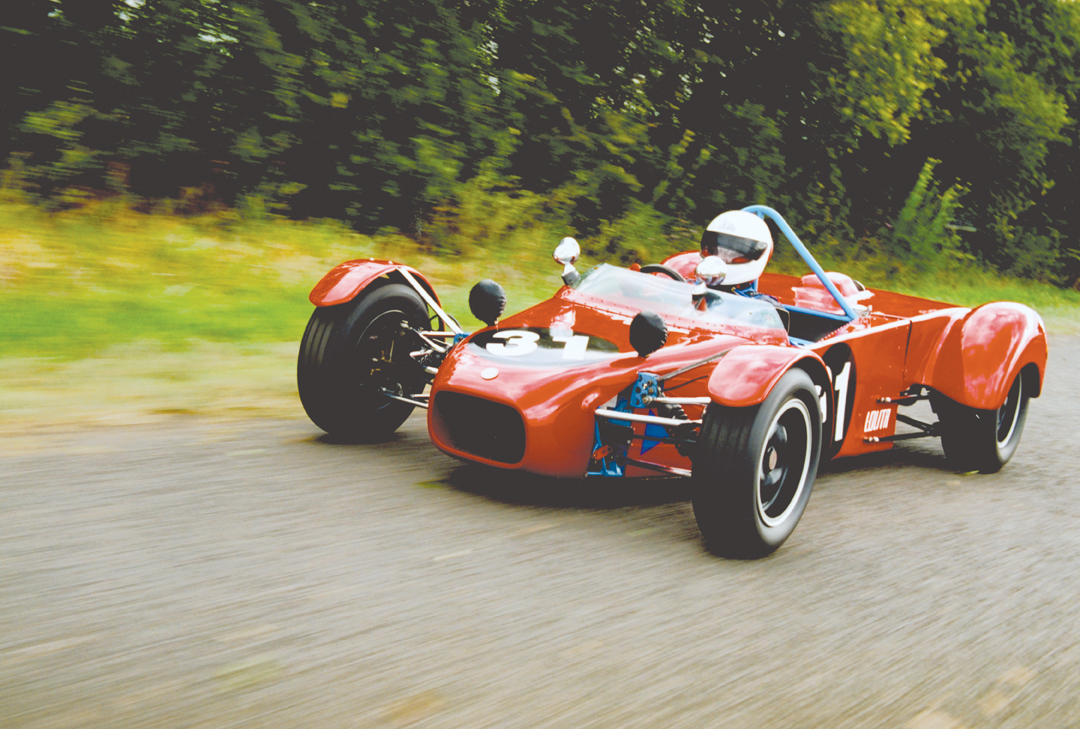
Early Days
Sorry to say that the Lolita name has no connection with the very risqué 1955 novel by Vladimir Nabokov. It’s actually a derivative of Lola, the UK racing car constructor. The sixties were swinging in more ways than one, and the UK was an attractive beacon for so many young Australians who made a beeline for the bright lights of Carnaby Street. England was also the place to be if you were in the slightest bit interested in motor sport, either from a driving or constructing prospective. Polish-born, young Australian Henry Nehrybecki left for the UK and found work with Lola, staying there for just under two years. Henry’s return to Australia was also slightly unconventional, as he chose to drive a new Mini 850 overland. Once back in Australia, Nehrybecki went to work for a Sydney-based BMC dealer.
Henry’s time with Lola wildly enthused him and almost from his first day back in Australia, he started drawing up plans for a competition car. Luckily, his new employers were sympathetic with his exploits, and he was allowed to use their facilities.
The year was 1964, and a young Ian Pope started working for the same employer and almost immediately was bowled over with Nehrybecki’s half-built racing car. “It really got me going,” Ian told us. “It wasn’t long before Henry and I became good friends as we talked the same language. It was Henry’s design and naturally he wanted to do all the fabrication, but I was thrilled to help out with the assembly using a dummy engine as a guide. We both worked on BMC cars every day, and the Mini engine presented no problems. The Cooper S hadn’t been long released and the 1,071-cc version was just perfect for what we wanted to do. Unfortunately, the engines were in very short supply and even though we did our best to buy one through our employer, we ended up waiting almost 4 months for an engine to arrive from England.
“With the engine and gearbox in the rear, the car ended up with a 40/60 weight distribution, and that caused quite a bit of fun. When the car was first tested, Henry had built a set of long flowing front fenders, not unlike those fitted to the Lotus 7. They looked good, too, but as soon as the car got to any decent speed, the front became even lighter and the car understeered atrociously making it quite unsafe. Next came a set of cycle fenders that transformed the car, making it very stable at speed. The understeer had changed to neutral, with just the right amount of oversteer when it’s driven with any degree of enthusiasm.”
Warwick Farm
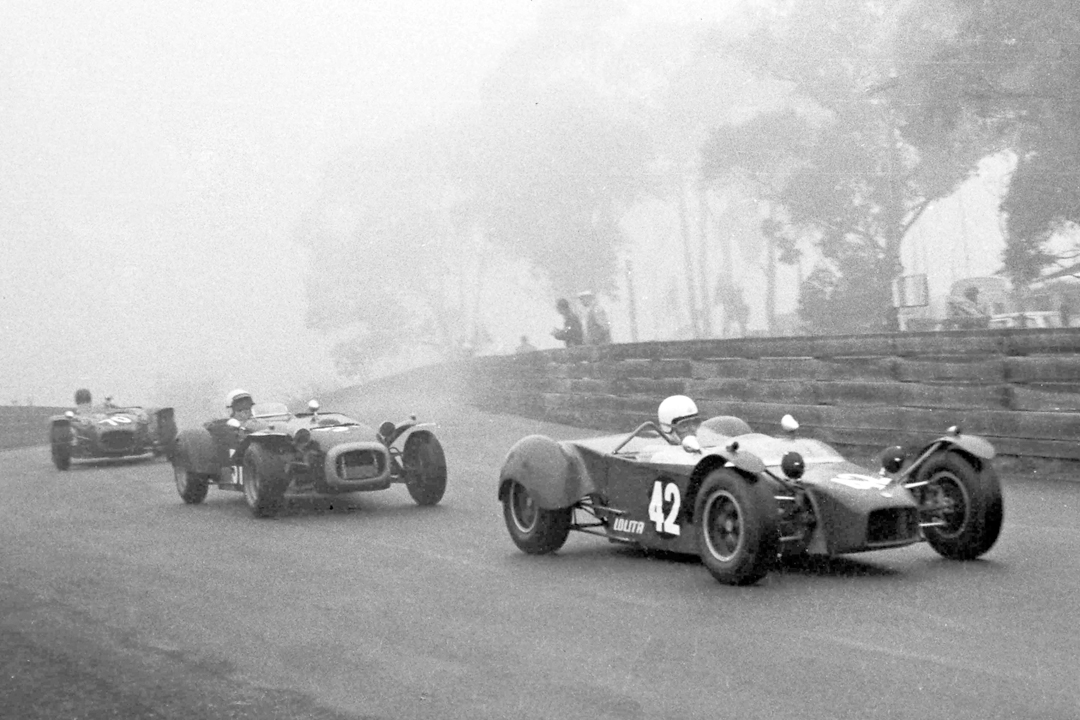
“Its first serious outing was at Sydney’s Warwick Farm in 1964,” Ian recalled. “To say it was a memorable outing would be an understatement. We had entered the car to run against the clubman cars like the Lotus 7, and that really set the cat amongst the pigeons. The organizers were adamant that it wasn’t a clubman as the engine was in the rear, and they wanted us to run against such sports racing cars as the Lotus 23. There wasn’t any rule that said that the engine had to be in the front, but there was one saying that the car had to have doors. They did allow us to practice, but without doors, we would not be allowed to race on Sunday. We didn’t have an option, so Henry and I worked all night to fit doors to the car. We did finish, but while doing so, it bucketed down outside and it was still coming down in torrents when we set off in the morning. We arrived at the circuit only to be greeted with the news of the meeting’s cancellation as the circuit was awash. We were not happy.
“By this stage, we had resigned from our jobs and set up Lolita Automotive Developments working out of a service station in suburban Sydney. Keen on establishing our fledgling business, we enlisted the help of Bob Holden to drive it in under-1,100-cc sports car races. That was useful in more ways than one, as we also used Bob’s Peugeot 403 as a tow car!
“Bob was making quite a name for himself having started racing during the 1950s driving a Peugeot 203. By the early 1960s, wherever motor sport was being staged, Bob was there. Not only was he running a Lynx Peugeot open-wheeler in hill climbs, there were also Holden driving Holdens at Bathurst, and he also took up rallying in a Peugeot. It was the Bathurst 500 of 1966 when Bob really made his name when the Morris Cooper S he was co-driving with Finnish rally ace Rauno Aaltonen took the checkered flag—a win that is still remembered with fondness by Australian Mini enthusiasts.
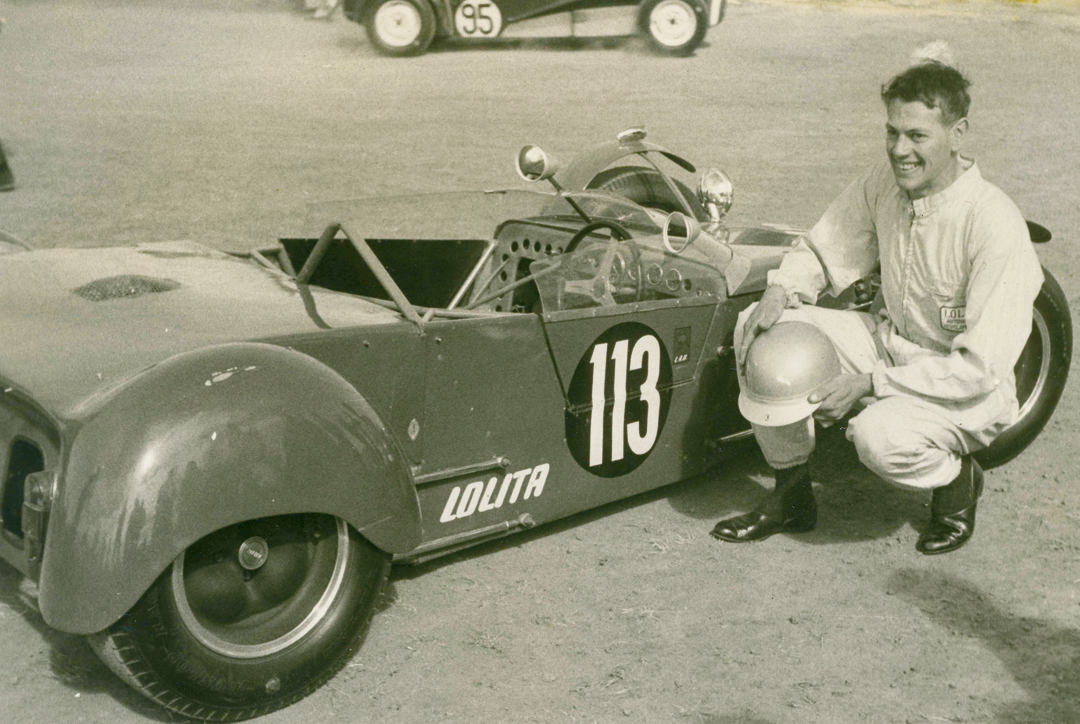
“We decided that 1966 was going to be our big year, and so entered the car in the supporting sports car races to the Australian rounds of the Tasman Cup. That meant races at Lakeside, Warwick Farm, Sandown, and Longford. Can’t say that we did fantastically well, but we did have a lot of fun. A class win at Lakeside was our best result, but it was the trip home that was perhaps the most memorable event. We stopped at the newly completed Surfers Paradise International Raceway. Amazingly, I managed to talk my way onto the circuit, and I can say that I drove the first racing car ever to use the track. However, there was more to Surfers Paradise than just the circuit, as there was an adjacent waterskiing lake. While we were there, Frank Gardner, Jackie Stewart, and Graham Hill were skiing. Graham was interested in the noise, came out to the car park and very kindly agreed to have his photo taken with the car.
“During the Tasman, Bob did the racing, but I did manage some of the qualifying,” Ian added. “However, there was one race meeting when I had the car all to my own. It was at Sydney’s Oran Park, and there would have been close to 30,000 people there to see the likes of Bob Jane and Pete Geoghegan in their Mustangs. It was my first meeting in the car and I went out, qualified, and while it felt good I wasn’t that confident. I remember looking at the time sheets and starting at the slowest at the bottom and feeling rather dejected as I couldn’t find my name. When I found that I was on pole, I really couldn’t believe my eyes. Next to me were Ian Johnson in his Milano and behind was Graham Woods in his very quick MGB. I won the race and felt as if I was walking on water for a week.
“After running it for 6 months, we decided it was time to move on and the car was sold in a complicated deal that saw half the price go to Henry, and I shared the car with the new owner who paid me with a series of post-dated checks over another 6 months. After that, it was traded in at a local sports car dealer for a Triumph TR2.”
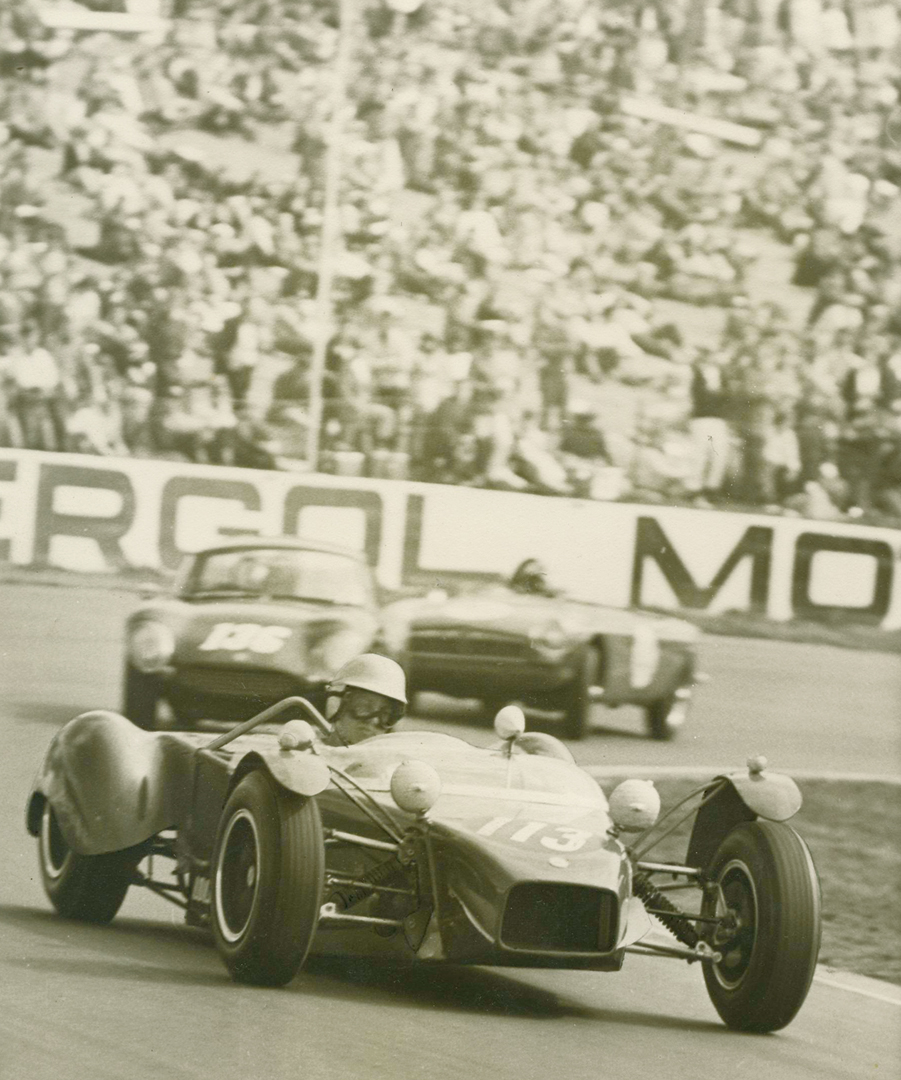
Lolita Mk II
During 1968 both Henry and Ian decided to build a second car based on their experience with the Mk I. While the earlier car was pure space frame, the Mk II was destined to be vastly different with a central monocoque and space-frame sections front and rear.
Finances once again weren’t what Henry and Ian would have liked, and Ian had said that the Mk II should have been fitted with a twin-cam engine right from the beginning, but they fell back on their Mini experience and decided once again to use a Cooper S engine. Being a few years after the Mk I was built also meant that such engines were readily available.
We also spoke to Henry Nehrybecki who said that he was building the Matich SR4 at the same time as the Lolita Mk II.
“I experimented quite a bit with the Mk II,” Henry said. “I was quite content to build the Mk I with a space frame, but wanted to do the Mk II differently. Right from the start I had planned on using a Mini engine as the setup was so simple. Looking back, perhaps I should have gone for something with a bit more power, but any thirst for power I had at the time was taken up by the quad-cam Repco V-8 that was going in the SR4.
“Once again Bob Holden was drafted to drive and it was raced at Warwick Farm, Calder, and Bathurst. At Mount Panorama, fitted with a 1,310-cc engine, it was timed at 124.30 mph down Con Rod Straight. The idea was to build more than the one, but the financial situation here at the time just didn’t allow it.”
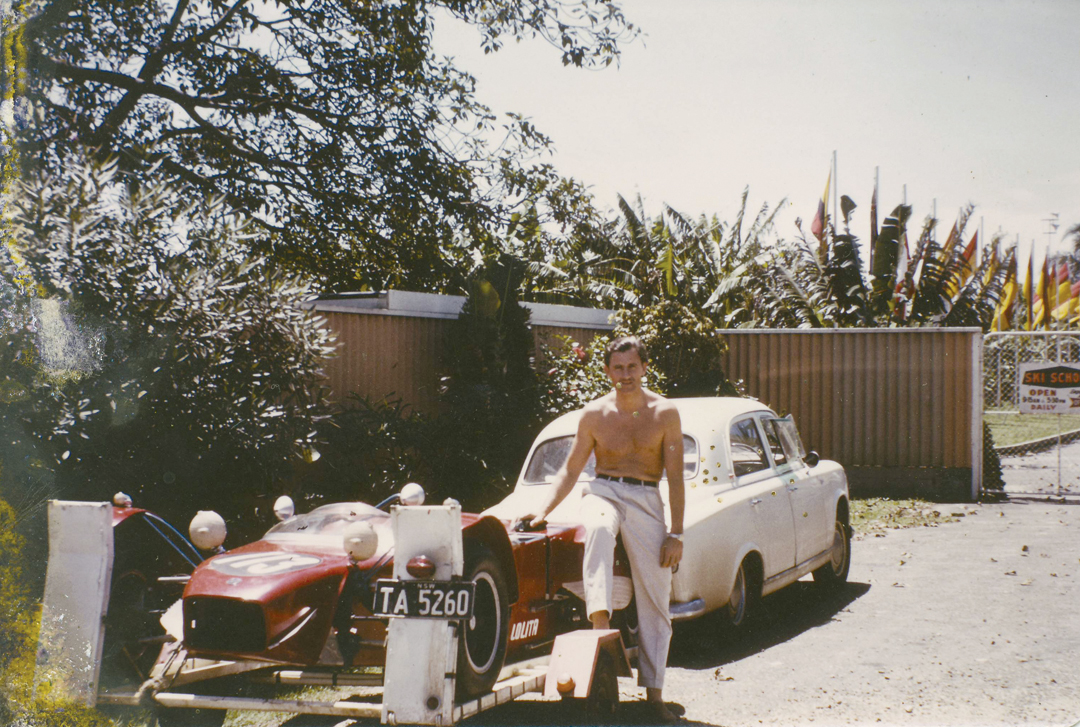
Finances were tight and it was soon sold to a Canberra-based enthusiast who had Henry fit it with an Alfa Romeo DOHC 1500 engine and Hewland transaxle. It was in this configuration that saw it used extensively in hill climbs through to the mid-1970s.
By 1970, both Ian and Henry had high hopes for the Mk II. Favorable reports were given by the motor sport press at the time and specification sheets were prepared for prospective customers. Plans were also drawn up for a closed GT version and it was let known that bodies alone could be made available. However, it wasn’t to be, as while there were many who registered an interest, no one was prepared to put their money where their mouths were.
As far as Henry and Ian were concerned, it soon became clear that running a suburban service station and building racecars didn’t mix. Henry was becoming more involved in the construction of the Matich F5000 cars, and also developed an interest in the emerging exotic GT car scene. So they went their separate ways, but remained good friends.
Holden on Lolitas
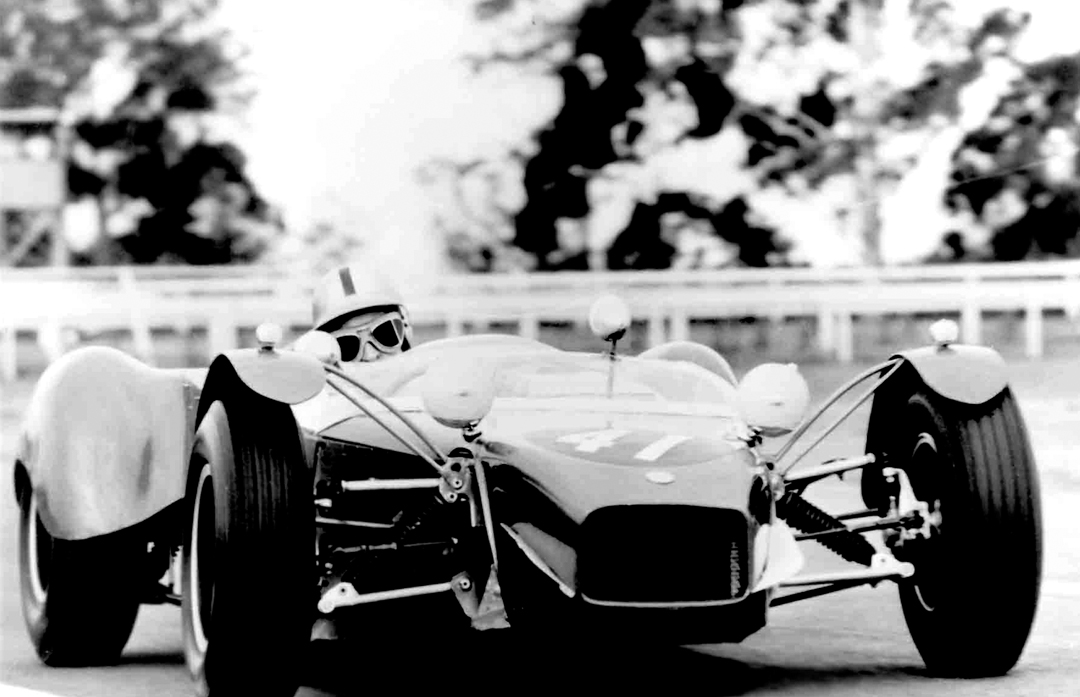
The name of Bob Holden is synonymous with many aspects of Australian motor sport. Bob started during the 1950s and, as already mentioned, has competed in circuit racing, hill climbs, and rallying. His name is particularly feted among local Mini enthusiasts, not only for winning the 1966 Bathurst 500, but also for being a BMC Australia works driver during the same period. Bob’s still competing in historics in his Ford Escort and is extremely approachable for calls of help from fellow enthusiasts.
“I was full-time into motor racing back then,” Bob told us. “I think I was running three different Minis at the time and taking them all to the one race meeting was a challenge. I had come to know both Henry and Ian quite well, having to pass their garage almost everyday. I would stop and talk a bit on how they were getting on. Being a racecar preparer and builder like them, it was always good to exchange ideas.
“When they asked, I was happy to help and can clearly recall being amazed at how well the Mk I drove. I also recall being very impressed with Henry’s design skills and was happy to assist in other ways, too, and, yes, we did use my Peugeot as a tow car for a time. Then there was another time when they were having engine problems. So, I agreed to lend them the engine out of the rally car I had at the time. The only catch was that I needed it back for a rally on Saturday night. So we fitted it to the Lolita for Saturday qualifying, took it out that afternoon, and back into the rally car. Did the rally that night and reinstalled it back into the Lolita for the races on Sunday. They were fun times; so different to motor racing today. I think at the time I went to every race meeting that was run, no matter where it was at.
“The Mk II was also quite amazing and so far ahead of everything else at the time, except for the Matich SR4 which Henry also designed. I was simply rapt in the car, plus there wasn’t anything else like it.”
Mk I Revisited
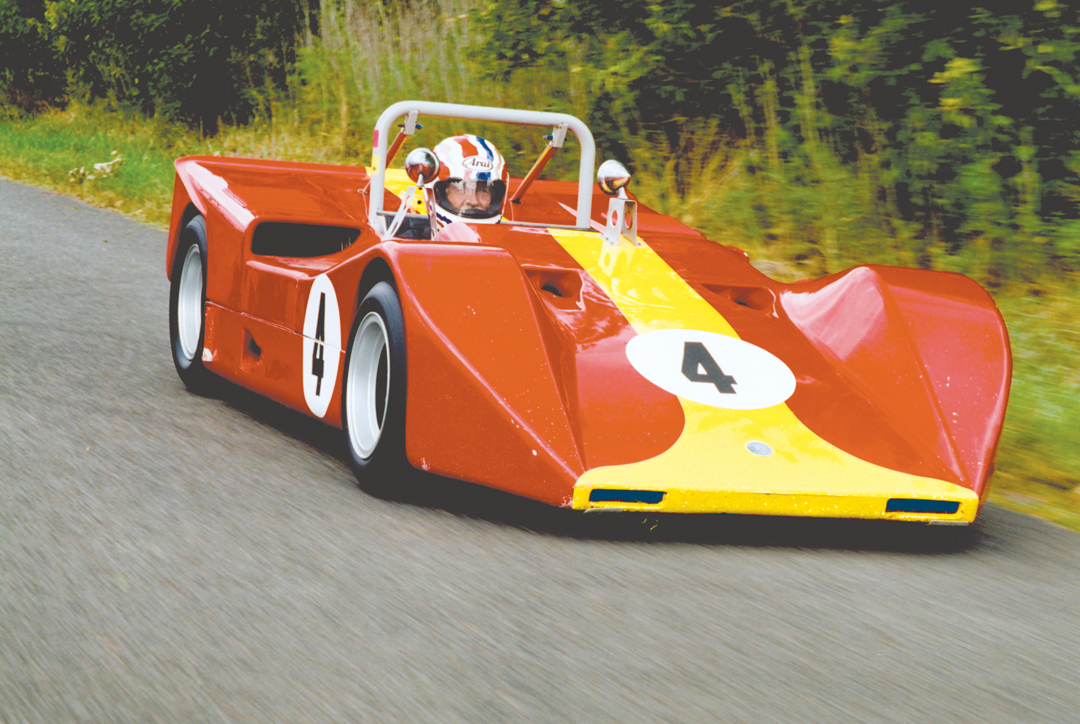
Ian Pope was dogged by ill-health during the 1970s, but by the decade’s end, he was fit enough to look for something to take his interest. The restoration of an Austin-Healey 100 certainly helped, as did the following 3000. A little club-level competition in the cars also helped, but it wasn’t enough. Then during a chance conversation with a friend, it was suggested that he should try and buy his old car back.
“I hadn’t heard of the Lolitas for years,” Ian told us. “After the Mk I was traded in on the TR, it was raced a few times by one of the sales staff. The next owner was in southern Queensland, and he raced it locally at Lakeside and Surfers Paradise, and brought it south for a couple of runs at Warwick Farm. For most of his 11 years of ownership, it was left out in the weather.
“Then in 1980 I made contact, did a little haggling, and AUS$2,600 later it was mine. Being left out in the weather was certainly not kind to the car, so much so that it needed a complete new frame. About the only components that were usable were the bulkhead, wheels, and disc calipers.
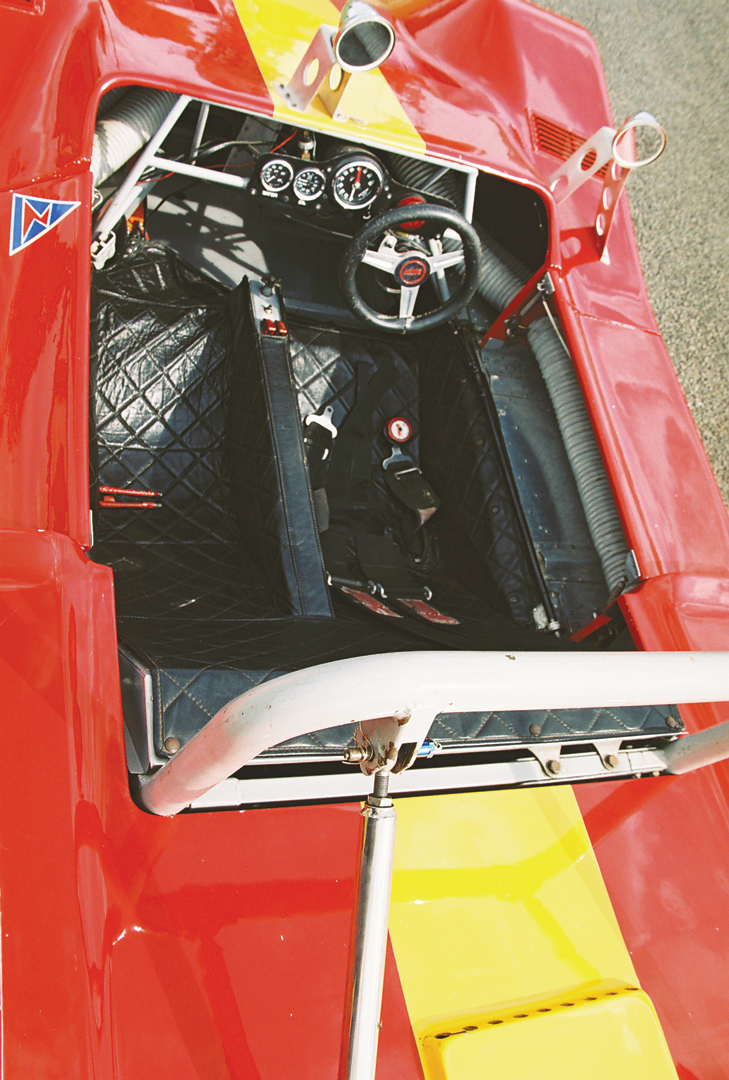
“It took me just on two years to restore the car to race condition,” Ian said. “I really enjoyed putting it all back together and, when Henry came around, it was just like the days when we built it in the first place. As far as the engine was concerned, I really didn’t want to use the smaller engine it started out with. Luckily when Bob Holden was driving, it ran in a few races with a borrowed 1,310-cc engine, so he could run in the under-1,500 class. In Australia what you can use in historic racing is restricted to what a car used when it was originally running, so I was allowed to fit the larger engine. I was involved in the formation of the HSRCA (Historic Sports and Racing Car Association), and the car ran at the first HSRCA meeting in 1982.
“Its engine is now out to 1,330-cc with 12.5:1 compression. The camshaft is full race and everything that needs to be is ported and polished. A competition clutch is also fitted along with a one-piece flywheel and a Jack Knight close-ratio dog box.
“It’s a great car in the wet,” Ian continued. “Especially with most of the weight over the rear wheels; but if the back gets out of line, it can start moving like a pendulum. I have been asked if I was going to sell it, but no way. It’s part of my life as I helped build it and then put back together again.”
It’s hard to imagine Ian Pope and the Lolita Mk I not being together at a race meeting. In fact, you could call them inseparable, as it’s rare to see a result sheet without Ian and the car getting a mention.
Mk II Reborn
After the Mk II was retired from its hill climb career it was all downhill from there. (Sorry for the pun!) It was Peter Addison, the current president of the HSRCA, who tracked it down and brought it back to life.
Peter told us that he really only bought a bit of a chassis and floor. He then stripped it right back to next to nothing, and rebuilt the car to take a Cooper S engine. Interestingly, like so many others, Peter also commented that with hindsight it would probably have been better with a bigger engine as the chassis could handle a lot more power. He also mentioned that back on the track, it was actually over-tired as the 10-inch-wide wheels and tires he fitted all around provided far too much grip.
To Peter, the Lolita Mk II was certainly a learning experience, especially when it came to setting it up. He said that during one testing session at Amaroo Park, there was one life-threatening accident that he wouldn’t want to wish on anyone. Coming up over the hill at the end of the straight, be braked heavily only to have the car go vertical onto its nose, caused by a wishbone breaking in the front suspension. Luckily it fell backward onto its wheels and not forward.
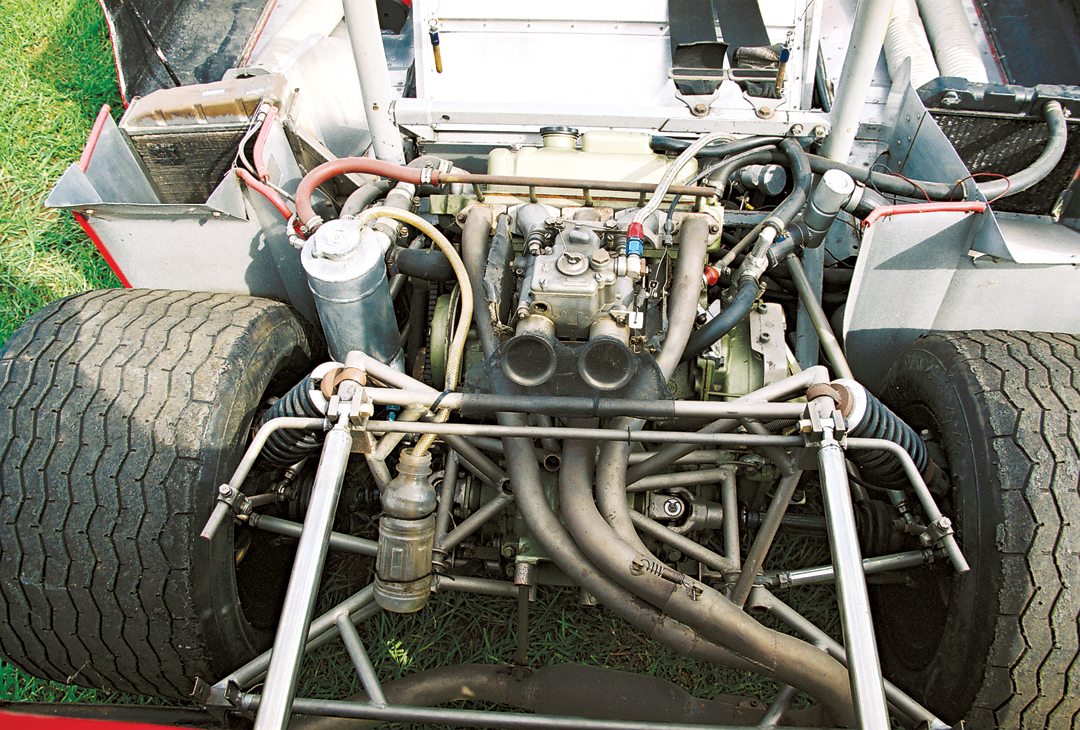
It was Ian Ross’s first historic racing car when he bought it 13 years ago, and he readily admits that back then he knew very little about setting up the cars, especially the suspension. However, he recalls a great time with the Mk II and raced it through to the last meeting at Amaroo Park in 1998, after which it was relegated to a corner of his workshop while Ian became involved in Elfins, Lolas, and the like.
Mk II in New Hands
The Lolita Mk II is Greg Neal’s first true-historic racing car, as while he has been involved in Historic Motor Sport, it’s been in the likes of MGBs and Ford Cortinas, none of which had an authentic racing history.
“I knew it hadn’t been on the track for some years,” Greg told us. “I suppose if money was no object I would have been looking for something like a McLaren Mk6, but as the dollars are not that plentiful, the Lolita seemed like the way to go.
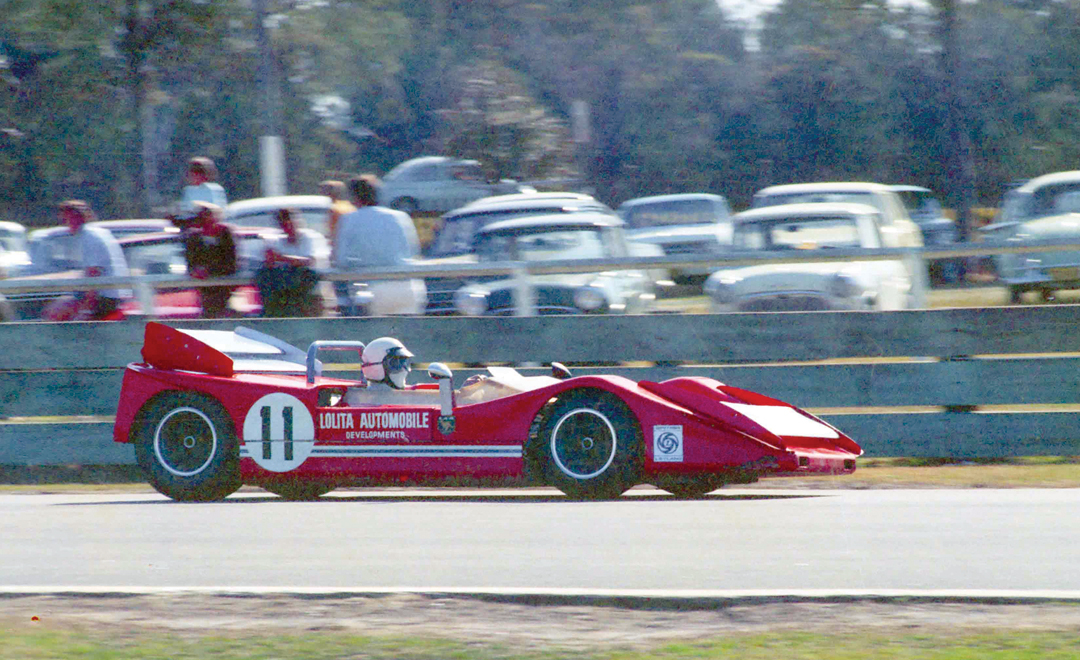
“Not that there was anything wrong with the car when I bought it, in fact far from it. However, the lack of use meant that it was tired in the nicest possible way and much refreshing was needed. So, I rebuilt the engine along with the brakes all around, plus the suspension needed aligning and, of course, new tires. I suspect that the engine is developing more power than when Ian owned the car, but there is more to be found. However, up to now, I have decided to err on the side of reliability.
“As a racing car, I honestly don’t think the Mk II has reached its true potential,” Greg said. “At a recent race meeting at the Oran Park circuit, I was very encouraged by a 1st place and class lap record. However, when Henry and Ian built the car, I believe that it was never truly sorted and I am sure that it could handle quite a bit more power, quite comfortably. With a bit of extra money, a DOHC engine would make it a very quick car indeed.
“However, I am more than happy to enjoy the car with the Mini engine. What I do like about the car is that it was built just around the corner from where I work, and by people who are still very much around. I really have to give credit where it’s due, as so many blokes talked about building racing cars, but not many actually did.”
Behind the Wheel
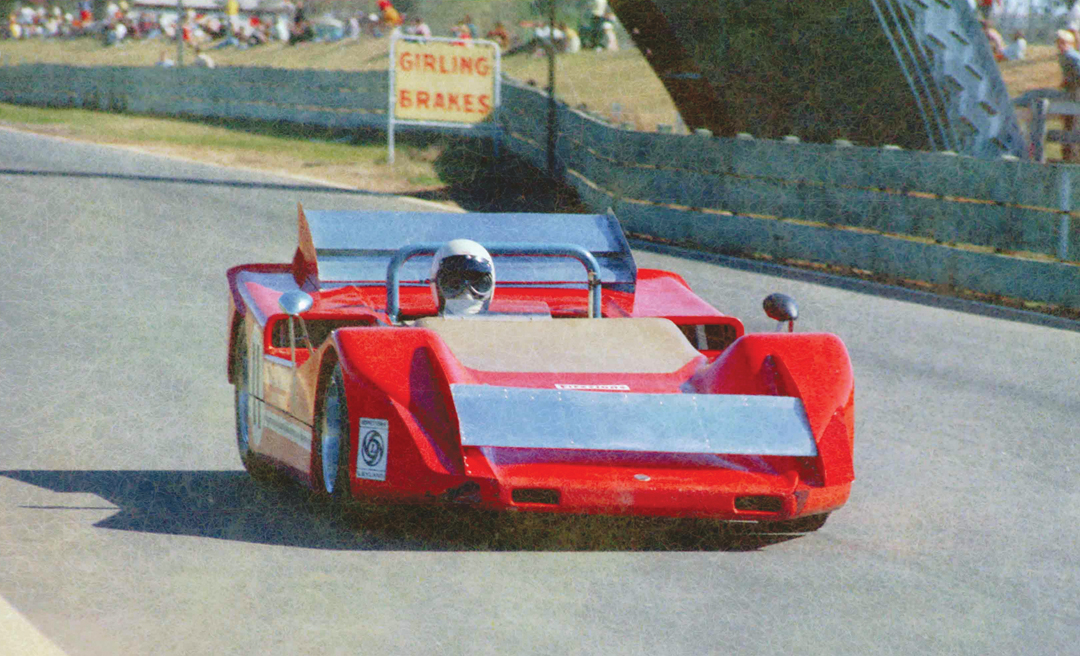
I was lucky to get my bum into the driving seats of both the Mk I and Mk II. Of course next to a road-going Cooper S, there is next to no weight in both cars, but frankly, I was surprised at just how much power there was and how quick both cars were.
I found both cars a delight to drive, although I did have a few gear-selection problems with the Mk II. No such problems with the Mk I, and I will say that it felt far more nimble of the two. Plus, I do like to see the front wheels bouncing around. The gear change, even with its multiple linkages, was direct and very precise. I suspect, to Ian, getting into the Mk 1 is a little like slipping on your favorite shoes, especially after wearing them for so long. The gearshift in the Mk II was a little like some VW Beetles I’ve driven. I knew the gearshift was connected to the gears, but it was more by expectation than by feel. In a later conversation with Greg, he said that it had been rebuilt and was now very precise.
It was clear that of the two Lolitas, the Mk II is the more highly developed machine. However, given the choice of which car I’d care to race in anger, I would choose the Mk 1 as I found it to be the easiest to drive. Like a full-size Mini, it turns where you want it to go and through Ian’s long-term ownership, it is as highly tractable as it is quick. With the disc/disc setup of both, I was more than comfortable when coming into slow corners, and both were easy to throw around the quickest of corners. Certainly both cars carry a high degree of fun factor. Probably edging past 9 out of 10 would be the best way of describing it. I would be more than happy to have either car in my stable. However, having both would be best!
Any More Lolitas?
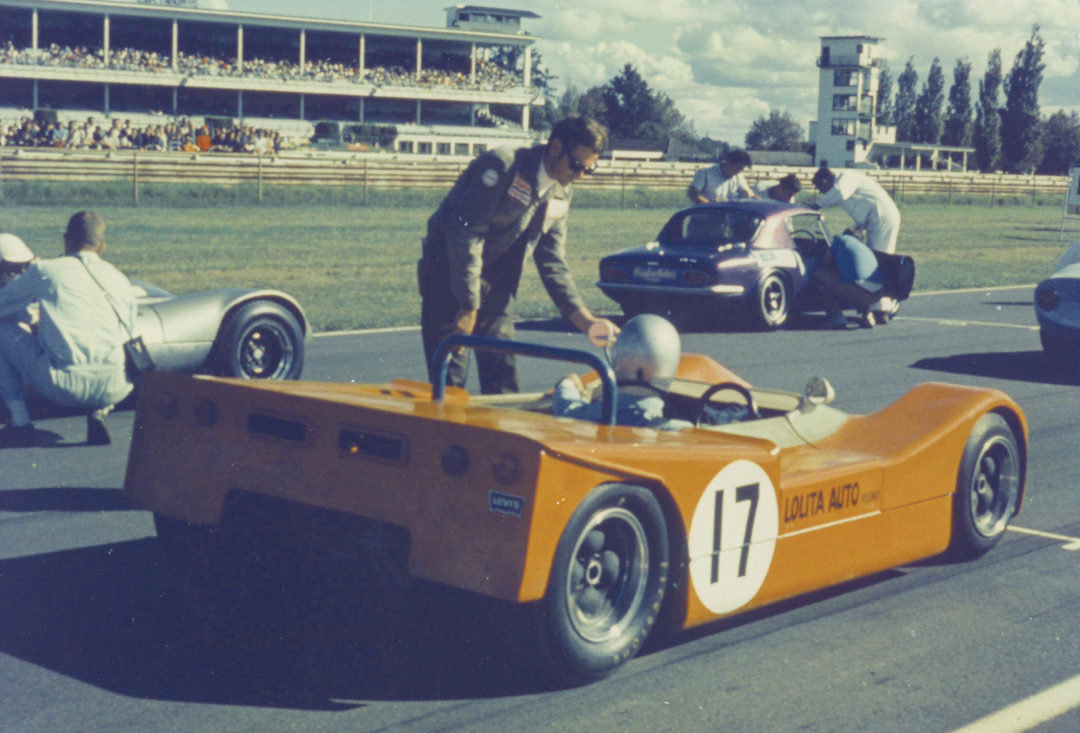
Afraid not, as just the two were built. However, I suspect that many Australian Historic Motor Sport enthusiasts would jump at the opportunity if there were more. However, there were zillions of BMC Minis built and quite a few were the highly sought-after Cooper models. I suppose you could make one, but it wouldn’t be historic, would it?
Many thanks to Ian Pope, Ian Ross, and Greg Neal for the opportunity of sampling the historic Lolitas and long may both cars be seen taking an active part in the Historic motor sport scene.
However, if somewhat newer than Historic is of interest, Henry Nehrybecki is still very much involved with fabricating competition cars and perhaps, after its long gestation, the Lolita Mk III will soon turn a wheel. The years have moved on and instead of a space frame or monocoque chassis, Henry has looked at the curved longitudinal beams used by Lotus and a Subaru flat-four engine.
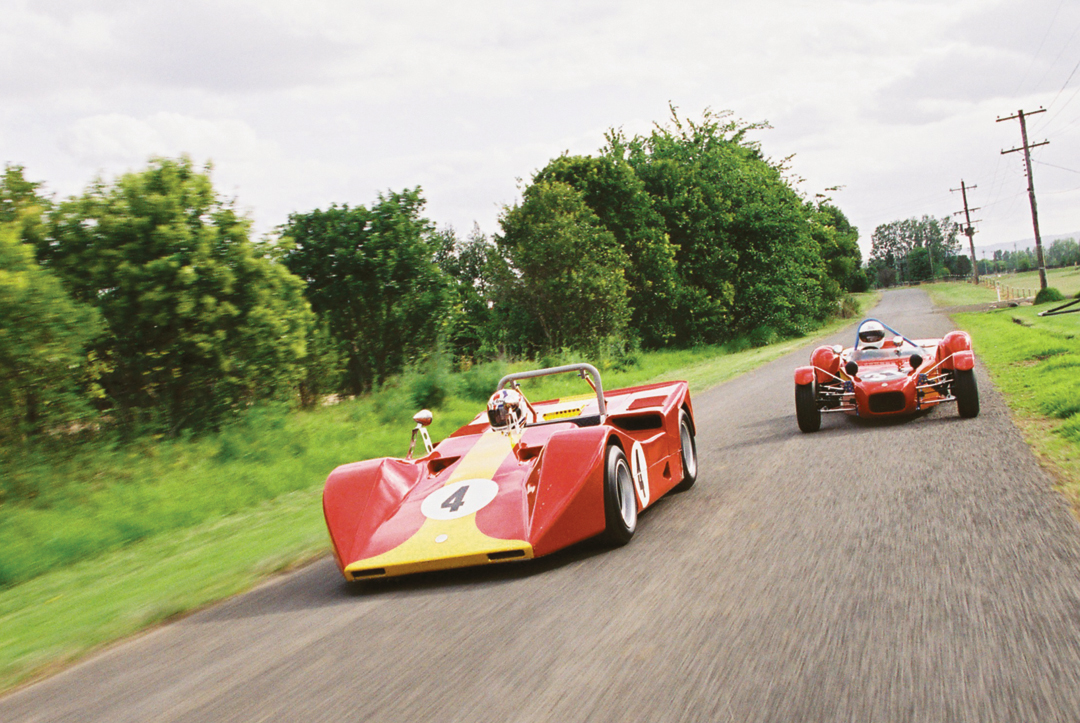
Specifications: Lolita MkII
Chassis: Semi monocoque with front and rear subframes in steel and aluminum.
Body: Fiberglass/Aluminum sports-racing two-seater open bodywork.
Wheelbase: 88.39 inches
Weight: 948 lbs
Front: Independent with lower wishbones, upper links, coil springs, adjustable telescopic shock absorbers, and adjustable anti-roll bar. Rear: Independent with lower wishbones, upper parallel links, coil springs, adjustable telescopic shock absorbers, and adjustable anti-roll bar.
Steering Gear: Rack and pinion.
Engine: Four-cylinder, 1380 cc (73.5mm x 81.33mm).
Power: 132 bhp at 7,500 rpm.
Carburetor: Single 45 DCOE Weber carburetor.
Clutch: Single dry plate.
Gearbox: BMC Mini Cooper S.
Gears: 4 forward, 1 reverse.
Foot Brake: 4-wheel discs.
Wheels: F. 13” x 10” R. 13” x 12”
Tires: F. 8.2/22.0 – 13 Avon R. 12.0/23.0 – 13 Avon.
Specifications: Lolita MkI
Chassis: Mild steel-tube space-frame
Body: Fiberglass/Aluminum two-seater open bodywork.
Wheelbase: 91.73 inches
Weight: 925.94 lbs
Front: Independent with upper and lower wishbones, trailing radius arms, coil-over tubular shocks and anti-roll bar. Rear: Independent with upper and lower wishbones, forward-facing radius arms, coil-over tubular shocks, and anti-roll bar.
Steering Gear: Rack and pinion.
Engine: Four-cylinder, 1330 cc (71.50mm x 81.33mm).
Power: 125 bhp at 7,500 rpm.
Carburetor: Single 45 DCOE Weber carburetor.
Clutch: Single dry plate.
Gearbox: Jack Knight 4-speed straight-cut close-ratio dog box.
Gears: 4 forward, 1 reverse.
Foot Brake: 4-wheel discs.
Wheels: F. 13” x 5 ½” R. 13” x 6”
Tires: F. 135×545 – 13 Dunlop R. 165×580 – 13 Dunlop.


